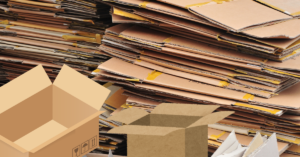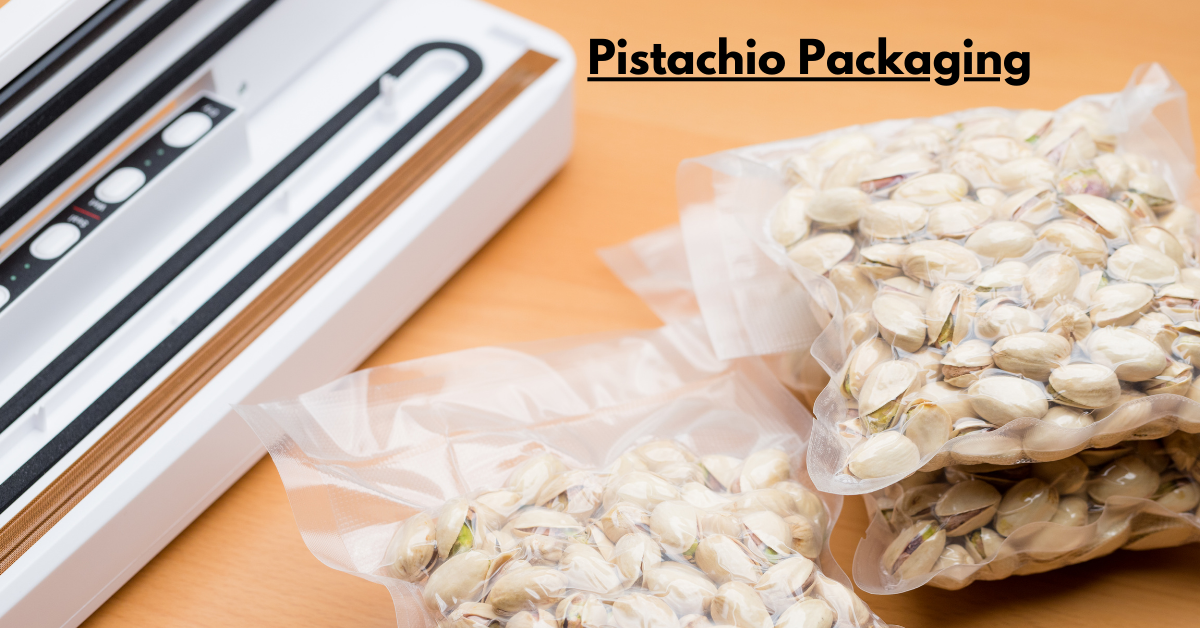Pistachio Packaging: In the segment of nibble nourishment, pistachios stand out not only for their tasty taste but also for their specific bundling necessities. This article investigates the different components of pistachio bundling, from materials used to maintainable hones, aiming to give total knowledge into this fundamental issue of the pistachio industry.
Importance of Pistachio Packaging
Pistachios, known for their dietary cost and enhancement, require cautious bundling to keep their freshness and avoid contamination. The bundling serves different purposes, including:
- Preservation of Freshness: Viable bundling makes a difference in holding pistachios’ enhance and surface by cautioning them carefully, ranging from presentation to dampness, discussion, and mild.
- Protection from Harm: Pistachio shells are delicate; hence, bundling should spare you physical hurt at a few arranged times in the transportation and garage.
- Information and Branding: Bundling manages critical records for buyers, such as dietary data, establishment, and certifications. It furthermore serves as a branding device for manufacturers.
- Plastic Packaging
Plastic bundling is critical in present-day society, advertising various benefits and posing a few challenges. Here’s a comprehensive investigation of its different aspects:
Benefits of Plastic Packaging
- Protection and Conservation: Plastic bundling is lightweight but substantial, giving great assurance against physical harm, dampness, and defilement. This quality amplifies rack life and maintains item quality.
- Versatility: Plastics can be formed into different shapes and sizes, making them suitable for bundling various items, from food to electronics.
- Cost-Effectiveness: Plastic bundling is generally more reasonable than options like glass or metal. Its lightweight nature decreases transportation costs.
- Convenience: Plastic bundling is regularly resalable and straightforward to open, improving customer comfort and usability.
- Combustibility: Producers can tweak plastic bundling with diverse coolers, shapes, and sizes to upgrade branding and showcasing efforts.
Regulatory Landscape
- Plastic Bans and Confinements: Numerous nations and districts are actualising bans or confinements on single-use plastics to control plastic pollution.
- Extended Maker Obligation (PER): Approaches are being received to hold producers responsible for the natural effect of their bundling, empowering feasible practices.
Future Outlook
The future of plastic bundling lies in adjusting its benefits with natural concerns. Collaboration among governments, businesses, and customers is vital to address the challenges posed by plastic bundling and move towards a more feasible future.
2. Paperboard and Cardboard

Paperboard and cardboard are paper-based materials broadly used in bundling and other applications, but their composition, thickness, and uses contrast.
Cardboard
Cardboard is a nonspecific term for a heavy-duty paper-based fabric. It is known for its quality and strength relative to its weight, making it reasonable for bundling applications requiring a few degrees of inflexibility. Cardboard is commonly used for boxes, cartons, and bundling materials for different customer and mechanical products.
There are distinctive sorts of cardboard, such as:
Corrugated Cardboard: This sort of cardboard comprises a layered (furrowed) layer sandwiched between level layers of cardboard. The folded layer gives quality and padding, making it perfect for shipping boxes and bundling delicate items.
Solid Cardboard: Also known as paperboard or box board, strong cardboard is made from a single thick layer of paper or paperboard. It is less adaptable than layered cardboard but offers excellent solidness and protection.
Paperboard
Paperboard, sometimes alluded to as cardboard (particularly in British English), is a thicker and more rigid, stricter paper. It is regularly thicker than usual and more slender than cardboard. Paperboard is frequently utilised for item bundling, realistic printing, and different applications where a thicker fabric is fundamental but with the bulk of conventional cardboard.
3. Adaptable Pouches
Flexible pockets offer consolation and are reasonable for pistachios due to their capacity to block dampness and oxygen.
Advantages of Adaptable Pouches:
- Lightweight and Space-Efficient: Adaptable pockets are lightweight compared to conventional bundling like cans or glass containers, lessening transportation costs and natural effects. They also occupy less space during shipping and on store racks, enhancing capacity and display.
- Barrier Properties: Cutting-edge adaptable pocket materials can provide excellent protection against dampness, oxygen, light, and contaminants, protecting the quality and freshness of the bundled item for extended periods. This amplifies rack life and decreases nourishment waste.
- Design and Branding: Pockets offer plentiful space for branding and item data, with choices for dynamic illustrations and inventive plans that draw consumers’ attention. They can be formed and measured according to item necessities, improving rack appeal.
- Convenience: Their adaptable pockets and easy-to-open features make adahelprs. Resalable alternatives are common, permitting rehashed use and keeping items fresh after opening.
- Sustainability: Many adaptable pockets are recyclable, and advancements in bundling innovation have driven timprovedadable materials. Their decreased fabric use and proficient use of space contribute to generally sustainable portability efforts.
- Cost-Effectiveness: Compared to routine bundling bunches, versatile pockets can be more difficult for venture stores regarding transportation and capacity. Their lighter weight and compactness can lead to lower shipping costs and a decreased carbon footprint.
4. Eco-Friendly Alternatives
Certainly! Eco-friendly choices imply things, sharpens, or ways of life that are arranged to have an unimportant impact on the environment, especially when compared to standard decisions that may cause harm or mutilate resources. These choices are dynamically basic as social orders worldwide look for ways to calm climate modification, diminish defilement, and ensure biodiversity.
Categories of Eco-Friendly Alternatives:
- Energy: Instead of depending only on fossil fuels, which contribute basically to nursery gas spreads, renewable energy sources like solar, wind, and hydroelectric power are considered Eco-friendly choices. These sources deliver control with little to no carbon emissions and can be handled economically.
- Transportation: Electric vehicles (Es) are picking up notoriety as eco-friendly electives compared to conventional gasoline and diesel vehicles. Es deliver zero tailpipe emanations and can be charged using renewable vitality sources, encouraging decreasing their natural effect on their life cycle.
- Food: Maintainable farming practices, such as natural cultivation, perm culture, and prior ranger service, limit the use of manures and pesticides that can harm biological systems and water quality. Plant-based diets or diets with decreased meat use also contribute to lower nursery gas emissions and decreased fresh and water resources.
- Waste Administration: Reusing and upcycling materials diminishes the amount sent to landfills and preserves common assets by reusing materials in unused items. Composting natural squander also diminishes methane emanations from landfills and enhances soil health.
- Building and Development: Green building hones enter on vitality proficiency, utilises maintainable materials like bamboo and reused wood, and consolidates inactive warming and cooling procedures. This decreases vitality utilisation and limits the natural impression of buildings.
- Consumer Merchandise: Eco-friendly choices in shopper products incorporate items made from reused materials, biodegradable packaging, and materials designed for strength and negligible natural effects that affect their life cycle.
1. Reusing Programs
Many makers motivate customers to reuse their bundling materials through directions campaigns and organisation with reusing enters.
2. Lightweight Packaging
Reducing the sum of textures used in bundling empowers to decrease squandering and transportation emissions.
3. Biodegradable Materials
Switching to biodegradable bundling substances guarantees that bundling breaks down clearly without hurting the surroundings.
4. Energy-Efficient Manufacturing
Using renewable power assets and advancing generation strategies diminishes nursery gas emanations related to bundling generation.
Developments in Pistachio Packaging
The bundling industry is continually advancing to fulfil buyer desires and administrative necessities. Developments comprise of:
1. Adjusted Environment Bundling (MAP)
MAP includes replacing the discussed bundle of ling with a defensive gasoline blend to expand pistachio os’ rack ways of life.
2. Keen Packaging
Smart bundling innovation, which incorporates sensors and markers, uncovers the circumstance of pistachios to ensure freshness and quality.
3. Intuitively Packaging
QR codes and NFC labels on bundling offer buyers access to additional item data and promotions.
4. Moderate Design
Simplifying the bundling format presently not handiest diminishes fabric usage complementing the charm of pistachio stock.
FAQs About Pistachio Packaging
What is the high-quality bundling for pistachios?
The fabulous bundling for pistachios depends on variables like freshness, maintenance, and natural impact. Choices include plastic, paperboard, and Eco-friendly substances.
How ought pistachios be spared as before as long as they are opened?
Once opened, pistachios should be stored in a watery place in a waterproof container, their freshness and taste.
Q. Are biodegradable pistachio bundling materials effective?
Yes, biodegradable substances are compelling in diminishing natural impact. They wreck down, and apparel contamination is present in comparable bundling materials.
Conclusion
Effective pistachio bundling is essential for protecting freshness, ensuring charm, and limiting natural impact. By grasping those hones, producers can meet shoppers’ hopes while enhancing the strength of this cherished snack.
In conclusion, pistachio bundling isn’t always wrapping an item; it’s about guaranteeing that each pistachio comes to buyers in its quality, reasonable condition while protecting our environment.
By practising sup-portability and development, the pistachio industry can flourish, providing delicious and nutritious snacks bundled with care and consideration.

